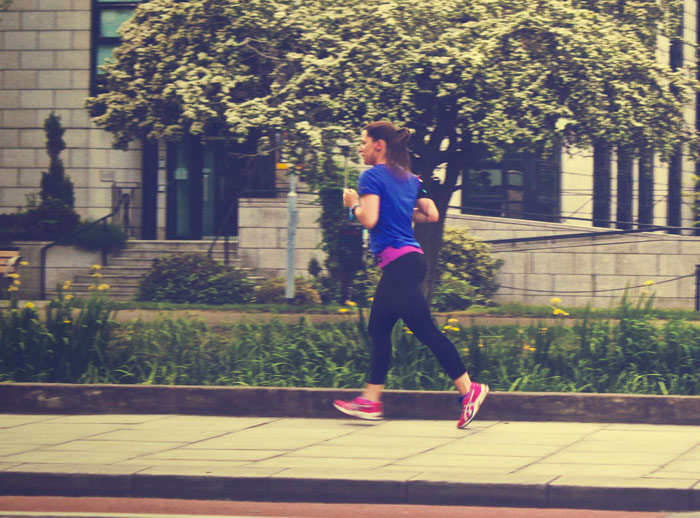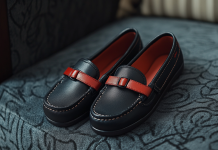How often do you change your sports shoes? More importantly, how do you know it’s time to change them? We will tell you what you should pay attention to in order to protect your joints from excessive load and avoid injuries and other troubles.

You change your running shoes only because they are shabby and do not look presentable? Of course, appearance is significant, but it is not the only criterion of good shoes. There are more factors such as shock-absorption, grip, and microclimate of the interior space. All these things are not visible to the eye, but they play an important role.
Although, it’s extremely important to change your running shoes in time if you’re a pro runner. You may start experiencing health problems after having run a marathon, such as The Rutgers Unite Half Marathon. So make sure you do everything right while taking care of your health. Your workout shouldn’t end up in an injury due to a sneaker problem.
What determines the degree of your sneakers being worn out
If you look for the information about this issue on the web, you will find many sites which specify the number of kilometers – from 500 to 1000. After you run this distance, you will be recommended to replace the sports shoes. But if you try to figure out what it is based on, you will not find any scientific or even logical arguments in Google. The numbers are given simply without any explanation.
These figures seem to be one’s attempt to give some kind of an average reference point. Maybe this is just a marketing trick, which was generated by the sales network to boost sales.
In any case, the distance of 500-1000 km is not a factor and not the figure which can be relied upon. There are at least three reasons for this.
- The athlete’s weight. The more the athlete weighs, the faster his shoes get shabby. If a person’s weight is 75 kg, the life of his shoes will be longer than the period the same shoes will last if they belong to a person weighing 110 kg.
- The surface. The surface, on which training is held, determines how quickly the sole is worn out. You will have different results on the pavement, on the ground, and on the rubber track of the stadium.
- The frequency of wearing. Everything is logical in this point. The footwear that is used once a week will last longer than the shoes that are worn every day.
As you can see, many factors affect the time shoes can be worn, and it is impossible to explain everything only by the distance. Therefore 500-1000 kilometers, after which you need to replace shoes, are more a myth than the truth.
How to determine that you need to replace shoes
How can we determine when to change the shoes? And how can we do that without using any sophisticated equipment, without subjecting the shoes to laboratory testing.
The shock-absorbing properties
The most important part of the running shoe is a shoe sole. The state of the sole determines what kind of load the legs, joints, knees, and feet will get and how comfortable the athlete will feel during the exercise.
Today, almost all the running shoes have the soles made of foam, which is called EVA (ethylene vinyl acetate). It is popular because it has excellent shock-absorbing properties and is very light. This is achieved due to the fact that the foam contains a lot of air bubbles, which compress with each step the foot makes on the ground, and provide shock-absorption. Over time, the bubbles burst and the compensation effect for the surface impact is reduced.
One of the easiest ways to test the cushioning properties of your shoes is to press the thumbs against the middle part of the sole on its side surface rather than the one that comes in contact with the ground. If the sole is well-pressed and small folds are visible, the shoes are still good enough.
But if the surface is hard and does not yield, it is a clear sign that it will not compensate for the hit. This means additional load on the limbs.
Appearance
Do not worry about your sneakers being stained. It plays no role, only demonstrates that you use them. The only thing you should worry about is their overall wear.
These are visual indicators to distinguish if the shoes need to be replaced:
- Your heel is fixed loosely and freely and is moving inside.
- One sole became asymmetrical compared with the other sole.
- One or two running shoes no longer stand upright on a flat surface.
- Toes protrude significantly, pulling the fabric.
These are the signs that it is time to replace shoes at least for purely aesthetic reasons.
Comfort
The ancient Greeks ran naked and barefoot. It was uncomfortable, so they invented shoes. Shoes are needed for the feet to feel as comfortable as possible. If this condition is not met, what is the point of these shoes?
Our body is able to tell us when to replace shoes. If you notice pain, itching in the feet, legs, knees, hips, or anywhere else, it is a clear sign that something is wrong. And perhaps the reason is in your shoes.
Consider another item – the grip with the ground. If the sole of your shoes has erased, it causes some discomfort and interferes with productive exercise. Such shoes should be replaced.
It happens quite often that you get used to the sneakers and do not notice any side effects while wearing. How to learn to feel the difference?
A few days after the purchase of new shoes, use them interchangeably with the old ones. Your body will feel the difference and remember this feeling.
Another important point is as follows. If your running shoes are worn out, it does not mean that they should go to litter. It just means that they are no longer suitable for running, but you can use them for walking, of course, if they still look aesthetically beautiful for this purpose.
And what other signs of worn shoes do you know?










